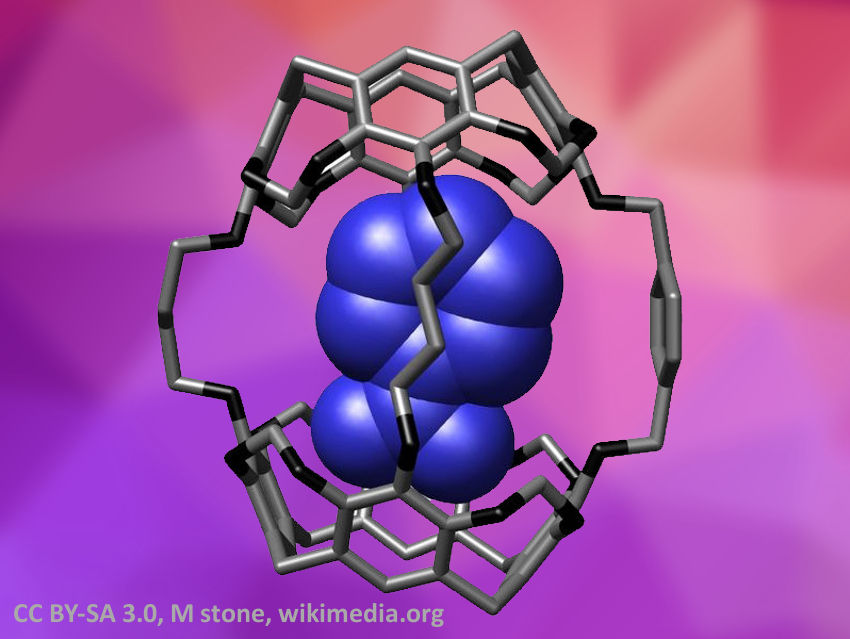Donald James Cram was born on April 22, 1919, in Chester, VT, USA. He was a pioneer of host–guest chemistry and received the Nobel Prize in Chemistry in 1987 together with Jean-Marie Lehn and Charles J. Pedersen “for their development and use of molecules with structure-specific interactions of high selectivity”.
Donald Cram’s father died when Donald was very young. Donald Cram grew up on both government assistance and on money he made by working himself while still underage. Cram studied chemistry at Rollins College, Winter Park, FL, as a scholarship recipient and at the University of Nebraska–Lincoln, USA, where he received his Master’s degree in organic chemistry in 1942. Cram received his Ph.D. in organic chemistry from Harvard University, Cambridge, MA, USA, in 1947. He then served as a postdoctoral researcher at the Massachusetts Institute of Technology (MIT), Cambridge, USA, working with John D. Roberts. Cram became Assistant Professor at the University of California, Los Angeles, USA, in 1947, and was promoted to Full Professor in 1955. He remained there until his retirement.
In 1952, Donald J. Cram formulated a rule known as “Cram’s rule of asymmetric induction”. It predicts the stereochemistry of the products of certain nucleophilic additions at carbonyl compounds. Cram is, however, best known for his contributions to host–guest or supramolecular chemistry, which were honored with the Nobel Prize.
In 1967, Charles J. Pedersen had developed crown ethers, cyclic compounds with multiple ether groups that can bind cations. Cram extended this approach and developed a range of three-dimensional cages, called carcerands or hemicarcerands, that can capture other molecules using non-covalent interactions (example with a captured nitrobenzene pictured). Donald J. Cram retired in 1987 and died on June 17, 2001, in Palm Desert, CA, USA.
Donald J. Cram is the answer to Guess the Chemist (88).
Sources
- Donald Cram, Nobel Laureate and UCLA Chemist, Dies at 82,
University of California, 2001. - Donald J. Cram: Biographical,
in Les Prix Nobel. The Nobel Prizes 1987, Editor Wilhelm Odelberg, Nobel Foundation, Stockholm, 1988.
Selected Publications
- The Design of Molecular Hosts, Guests, and Their Complexes (Nobel Lecture),
Donald J. Cram,
Angew. Chem. Int. Ed. Engl. 1988, 27, 1009–1020.
https://doi.org/10.1002/anie.198810093 - Chiral Recognition Properties in Complexation of Two Asymmetric Hemicarcerands,
Juyoung Yoon, Donald J. Cram,
J. Am. Chem. Soc. 1997, 119, 11796–11806.
https://doi.org/10.1021/ja972719l - Chiral recognition between host and guest: a binaphthyl-18-crown-6 host with D-phenylglycinium methyl ester perchlorate guest. A difficult structure solved with CRUNCH,
Donald J. Cram, R. A. G. de Graaff, Carolyn B. Knobler, David S. Lingenfelter, Emily F. Maverick, Kenneth N. Trueblood,
Acta Crystallogr., Sect. B: Struct. Sci. 1999, 55, 432–440.
https://doi.org/10.1107/S0108768198013524 - Hemicarcerands containing tosylamide bridges,
Donald J. Cram, Roger C. Helgeson, Carolyn B. Knobler, Emily F. Maverick,
Tetrahedron Lett. 2000, 41, 9465–9470.
https://doi.org/10.1016/S0040-4039(00)01612-9 - Dynamic Hemicarcerands and Hemicarceplexes,
Stephen Ro, Stuart J. Rowan, Anthony R. Pease, Donald J. Cram, J. Fraser Stoddart,
Org. Lett. 2000, 2, 2411–2414.
https://doi.org/10.1021/ol005962p - Through-Shell Alkyllithium Additions and Borane Reductions,
Ralf Warmuth, Emily F. Maverick, Carolyn B. Knobler, Donald J. Cram,
J. Org. Chem. 2003, 68, 2077–2088.
https://doi.org/10.1021/jo026649z
Also of Interest
- 75th Birthday: Jean-Marie Lehn,
ChemViews Mag. 2014.
Jean-Marie Lehn received the Nobel chemistry prize in 1987




